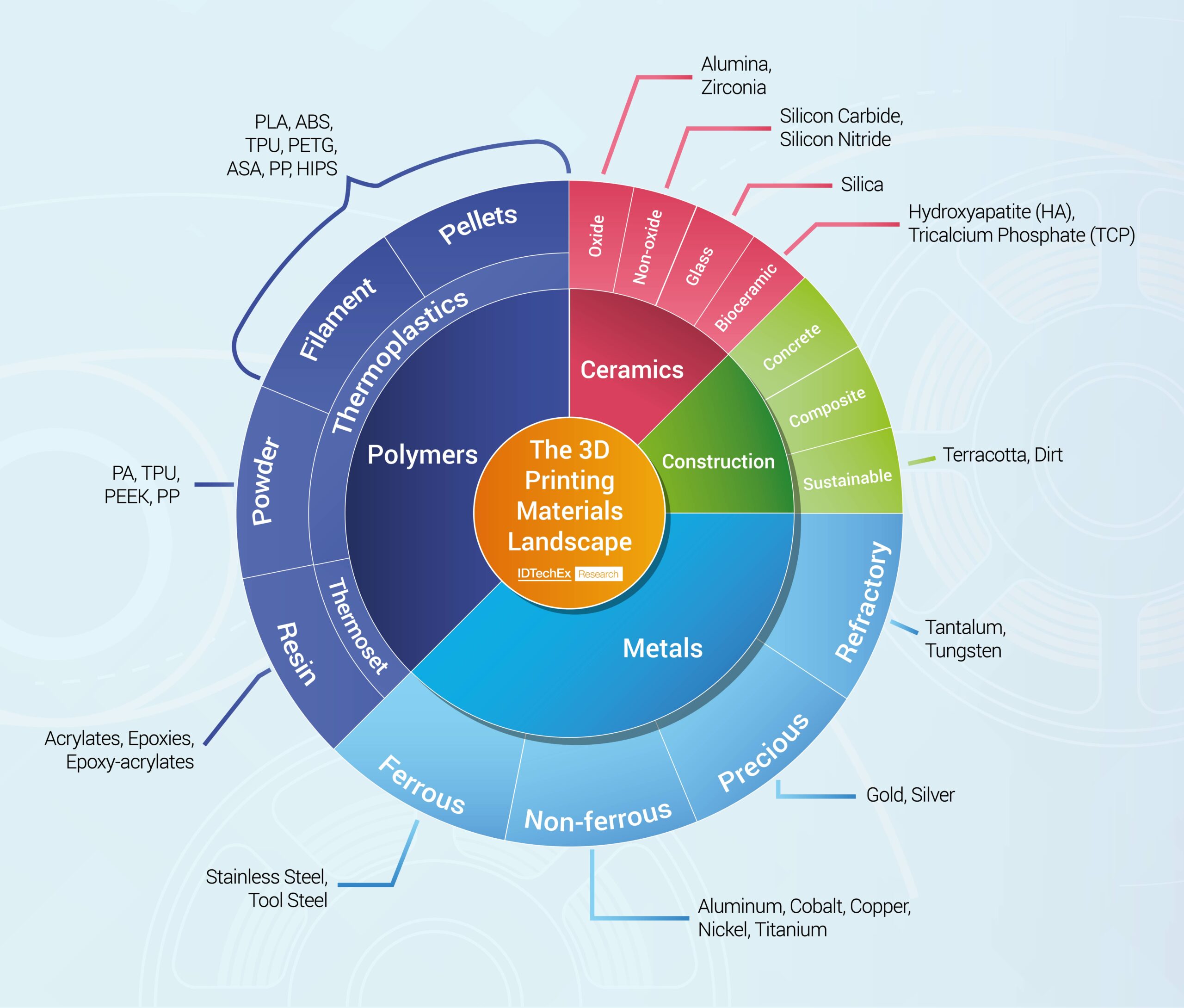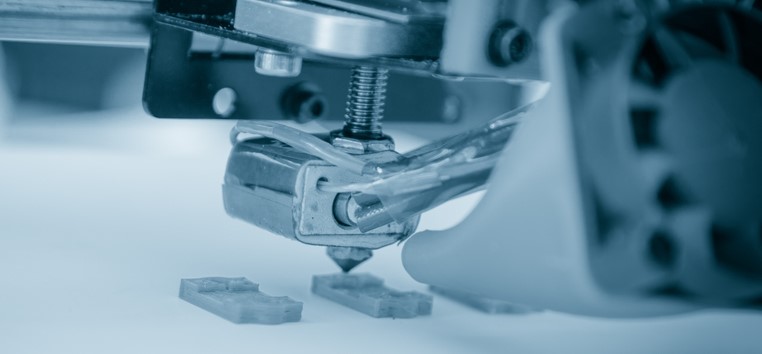Editor’s note: The following is excerpted from a report written by Sona Dadhania, a technology analyst with IDTechEX, an organization that tracks emerging technologies.
The 3D printing materials market, forecast by IDTechEx to hit US $29.5 billion by 2033, was once dominated by printer manufacturers. These printer manufacturers, utilizing proprietary materials on their printers, were the main source of 3D printing materials for end-users. However, as end-users looked for more high-performance and diverse materials for use in applications like aerospace, consumer goods, and healthcare, the only supporting proprietary materials began to lose favor around 5-10 years ago. This created space for alternative suppliers of 3D printing materials to begin to prosper.
One of the most important newer sources for additive manufacturing materials were chemical companies; while they have always supplied raw materials that were then formulated into 3D printing materials, these chemical companies now directly supplied finished materials into the additive manufacturing market. Multinational chemical giants like BASF, Evonik, Mitsubishi Chemical, and Covestro established their own additive manufacturing divisions, highlighting the 3D printing industry as an important future growth area. The last five years of success for chemical suppliers in additive manufacturing demonstrates a clear shift in how 3D printing materials reach end-users.
The announcement on August 8th, 2022, that Stratasys had acquired Covestro Additive Manufacturing marks a major shake-up in the additive manufacturing materials landscape. It comes less than two years after Covestro’s acquisition of DSM Resins & Functional Materials, which saw DSM’s and Covestro’s additive manufacturing divisions merge under the Covestro brand. It also comes less than a year after Stratasys announced its shift away from only supporting proprietary materials with its Open Material License, where it had made Covestro’s materials available to Stratasys printer users.
“Innovative materials are the fuel of additive manufacturing and translate directly into the ability to create new use cases for 3D printing, particularly in the production of end-use parts like dental aligners and automotive components,” stated Stratasys CEO Dr. Yoav Zeif. “The acquisition of Covestro’s highly regarded Additive Manufacturing business positions us to further grow adoption of our newest technologies. We will now have the ability to accelerate cutting-edge developments in 3D printing materials and advance our strategy of providing the best and most complete polymer 3D printing portfolio in the industry.”
For Stratasys, this acquisition demonstrates their continued emphasis on materials, which has become an increasingly important part of their business in recent years – arguably, this acquisition is an attempt to recapture the revenue associated with formerly supplying proprietary materials produced in-house, according to a company press release. Reportedly, Stratasys now boasts one of the largest polymer 3D printing materials portfolios in the industry, covering filaments, powders, and resins. On Covestro’s part, they commented that they divested their additive manufacturing business to focus more on their “core industries”; this is after identifying additive manufacturing as an “innovation venture” as recently as late 2020.
What does this mean for the overall 3D printing materials landscape? With numerous chemical companies like Arkema, BASF, Evonik, Huntsman, Solvay, Victrex, and Mitsubishi Chemical expanding their footprint in additive manufacturing through strategic investments and partnerships, it seems unlikely that this acquisition foreshadows a mass exodus of chemical companies from the field. However, given anticipated challenging market conditions, other large material suppliers may well retrench by focusing on their core businesses rather than on early-stage, relatively R&D-intensive industries like additive manufacturing. IDTechEx will continue to monitor whether the coming year may signal another turning point for the fast-growing 3D printing materials market.
Market Forecasts for Additive Manufacturing Materials
IDTechEx’s new report on 3D printing materials market (2022-2032) forecasts future revenue and mass demand for the additive manufacturing materials market while carefully segmenting the market by seventy-five different forecast lines across four major material categories. Additionally, IDTechEx provides comprehensive material benchmarking studies alongside detailed analysis on the additive manufacturing materials market.

For further information on this market, including interview-based profiles of market leaders and start-ups, polymer material comparison studies, and granular 10-year market forecasts, see the market report “3D Printing Materials Market 2022-2032”.
For more information on this report, please visit www.IDTechEx.com/3DPMats, or for the full portfolio of 3D Printing research available from IDTechEx please visit www.IDTechEx.com/Research/3D.
_________________________
To become a subscriber, visit www.thecannatareport.com/register or contact cjcannata@cannatareport.com directly. Bulk subscription rates are also available upon request and included in our media kit.




